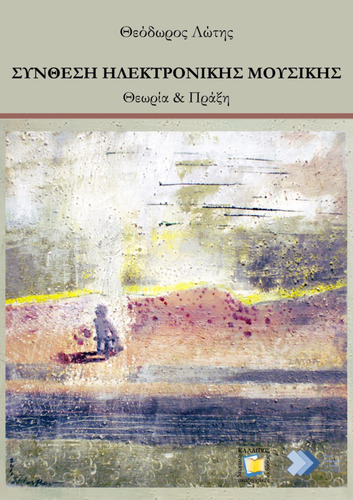| Title Details: | |
|
Electronic Music Composition |
|
| Other Titles: |
Theory and Practice |
| Authors: |
Lotis, Theodoros |
| Subject: | HUMANITIES AND ARTS > ARTS AND LETTERS > PERFORMING ARTS > MUSICAL STYLES > ELECTRONIC MUSIC HUMANITIES AND ARTS > ARTS AND LETTERS > ARTS > ART THEORY > AESTHETICS HUMANITIES AND ARTS > ARTS AND LETTERS > PERFORMING ARTS > MUSICAL STYLES > CONTEMPORARY MUSIC HUMANITIES AND ARTS > ARTS AND LETTERS > PERFORMING ARTS > MUSICAL STYLES > EXPERIMENTAL MUSIC HUMANITIES AND ARTS > ARTS AND LETTERS > PERFORMING ARTS > MUSIC > MUSICOLOGY > ANALYSIS (MUSIC) HUMANITIES AND ARTS > ARTS AND LETTERS > PERFORMING ARTS > MUSIC > MUSICOLOGY > MUSIC TECHNOLOGY HUMANITIES AND ARTS > ARTS AND LETTERS > ARTS > ART THEORY > AESTHETICS |
| Keywords: |
Electronic music
Electroacoustic music Acousmatic music Composition Music technology Computer music Contemporary music Concrete music Montage Sound mixing Spectromorphology Spatiomorphology Music analysis Experimental music Compositional techniques Sound writing techniques |
| Description: | |
| Abstract: |
Since the beginning of the 20th century, the landscape of musical composition has shifted drastically. Sounds from everyday life, nature, industry, and transport, appeared among the collection of available compositional resources, alongside the traditional instruments. This coexistence of the traditional "musical" element with extra-musical factors modified the compositional strategies and methodologies, ultimately changing the core idea of the musical work. The composition of music became the organization of sounds, the art of music embraced the art of sounds, the note as the dominant building block gave way to the sound object, and many composers shifted their practice from the homogeneous families of instruments and notes to the heterogeneous world of ubiquitous sounds. This book does not focus on the instrumentation of electronic music, which is largely covered by the book “Music Informatics and Computer Music” (Lotis & Diamantopoulos, 2015). It examines the writing and compositional techniques of electronic and acousmatic music, the art of sound editing and mixing, the core principles of the theory of spectromorphology, and the concepts of form, structure, time, and space in electronic music.
|
| Linguistic Editors: |
Litoxoidou, Anastasia |
| Graphic Editors: |
Tsompani, Eirini |
| Other contributors: |
Cover painting: Cover panel: Sofia Stavrou, Untitled (2011). Mixed technique, 33x33. |
| Type: |
Undergraduate textbook |
| Creation Date: | 04-08-2023 |
| Item Details: | |
| ISBN |
978-618-228-070-6 |
| License: |
Attribution - NonCommercial - ShareAlike 4.0 International (CC BY-NC-SA 4.0) |
| DOI | http://dx.doi.org/10.57713/kallipos-301 |
| Handle | http://hdl.handle.net/11419/10249 |
| Bibliographic Reference: | Lotis, T. (2023). Electronic Music Composition [Undergraduate textbook]. Kallipos, Open Academic Editions. https://dx.doi.org/10.57713/kallipos-301 |
| Language: |
Greek |
| Consists of: |
1. The Four Listening Modes. The Seven Morphological Criteria for the Description of Sounds 2. Preparation of the Compositional Work and the Studio. Collection and Recording of the Sonic Material. Energetic (physical) Models 3. Time. Time Stretching Techniques. Time Modifications 4. Basic Techniques of Montage I. Spectromorphology I 5. Basic Techniques of Montage II. Spectromorphology II 6. Sound Worlds I. Basic Techniques of Mixing I 7. Sound Worlds II. Gesture and Texture. Basic Techniques of Mixing II 8. Structure. Form. Spectromorphology III 9. Sound Processing Techniques 10. Space Additional Material |
| Number of pages |
372 |
| Publication Origin: |
Kallipos, Open Academic Editions |
| You can also view | |
| User comments | |
There are no published comments available! | |

